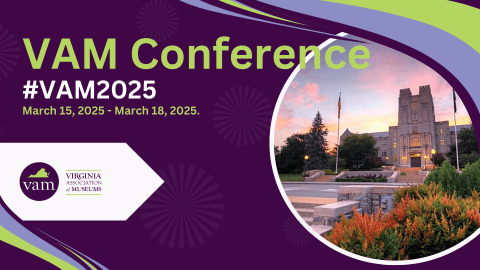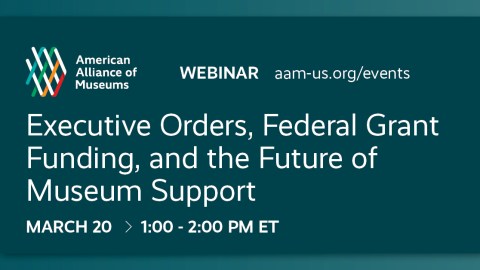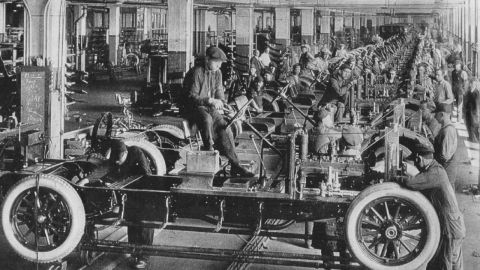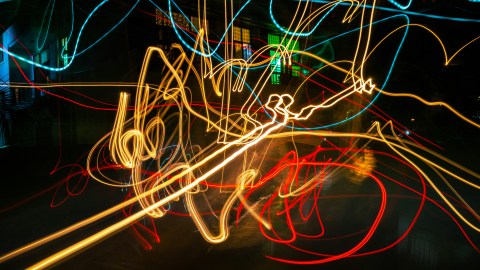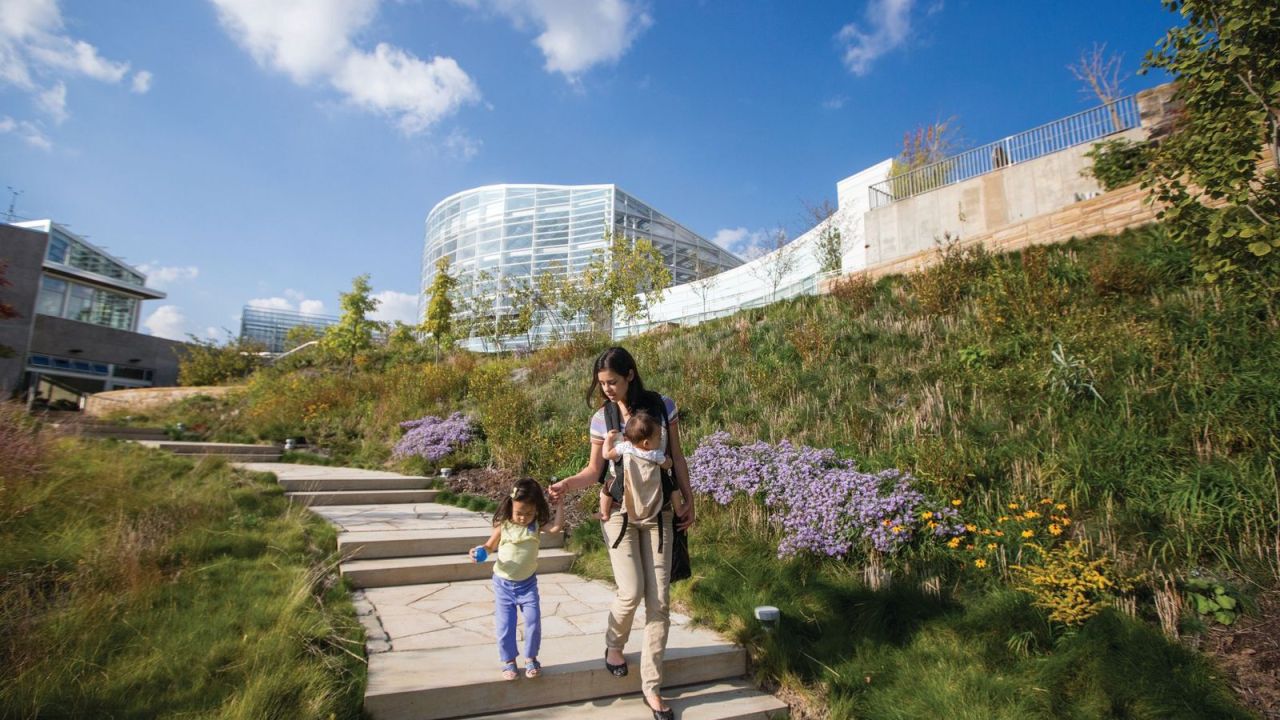
This article originally appeared in the July/August 2022 issue of Museum magazine, a benefit of AAM membership.
With a regenerative approach, every museum can address climate change.
Not so long ago many in the museum world felt that if our mission didn’t explicitly include concern for the environment and climate change, we were off the hook. Attending to such concerns was a form of “mission creep,” and environmental initiatives were best led by environmental organizations.
But times have changed, and they have changed rapidly: climate change is real, advancing at an alarming rate and affecting everyone and everything on the planet. Today, the trust that we have established in the communities we serve and our decades of commitment to the exploration of science, history, art, and nature compel us not only to address these issues but to be the leaders of change in our regions and beyond.
At the annual United Nations–sponsored Climate Change Conferences, countries make pledges based on the proposition that the whole country will work to meet specific, measurable goals. The US has pledged to cut carbon emissions in half by 2030. Is your museum on track to help the US meet this commitment? Do you know what actions your museum will need to take to achieve such a goal?
In 2018, the Stockholm Resilience Center released a study related to the UN’s 17 sustainable development goals. The study recognized that while many organizations had voiced support for those goals, no one had studied the best ways to achieve them. Using various models for different levels of action (and inaction), the study found that only “bold, transformational policies” would keep us out of the red zone for planetary distress.
In other words, business as usual isn’t good enough anymore. As Albert Einstein famously said, “No problem can be solved by the same kind of thinking that created it.” We need to adopt bold, transformational thinking and change the way we see, consider, and interact with the world. Regenerative thinking can show us how.
What Is Regenerative Thinking?
In her work, author and educator Carol Sanford describes four paradigms for how we interact with the world. The extractive model is all about “me”; the individual in this model sees the world as fragments that are there for the taking and is either unaware or doesn’t care who or what they hurt to get what they want. In the less bad model, we see a shift in thinking from “me” to “us”; an individual in this paradigm still sees the world as fragments but now tries to stabilize them and reverse some of the bad. This is where the environmental movement started. The do-good model is also about “us” but recognizes reciprocity; an individual in this model sees the world as fragments and tries to improve it and project that vision of what good looks like on others. The final paradigm is regenerative; it is about “us” and seeing the world as an interconnected and nested system, a series of relationships that we have with each other, other species, and the planet. This is how many Indigenous communities think.
Respecting those relationships is key to creating harmony and allowing each entity to develop to its highest capacity based on its own individual essence—the set of qualities, values, experiences, and characteristics that make a person, a community, a bioregion, or an institution unique and non-displaceable within the systems they inhabit.
We can be most effective when our organizations and the communities we serve follow a regenerative approach in which individuals move beyond thinking about themselves in isolation and see the larger social and natural systems that we collectively need to survive.
New Thinking in Practice
To guide our practice of regenerative thinking at Phipps Conservatory, we use several frameworks: two particularly useful examples are the Living Systems Stakeholders and Three Lines of Work, shown above.
Each framework reminds you of the larger systems in which you operate, to make a fuller accounting of the effect of your actions as they ripple from system to system, and to fine-tune your thinking to ensure that your work is value-adding, capacity-building, and life-sustaining.
The Living Systems Stakeholders framework helps define success by recognizing five distinct stakeholders: investors (or donors); users (visitors and people who engage with your programming); community; co-creators (staff, volunteers, suppliers); and the planet. In regenerative thinking, rather than focusing on just one of these groups, we aim to add equal value to all five stakeholders in everything we do.
The Three Lines of Work framework helps expand our impact by visualizing our operations at three levels. In the center, we focus on ourselves and becoming proficient in what we do. At the second level we focus on the organization, getting out of our departmental and operational silos and understanding how we support the organizational mission in collaboration with others. At the third level, we focus on community and what we can do to support positive and developmental change.
Taking Action
So, what can you do to address climate change? Change the way you measure and define success to encompass broader impacts, longer-term goals, and a more holistic group of stakeholders. Learn from others what you can do to change how you operate. As you begin to see how you can make changes, start thinking about how you can continue to develop the capacity of your organization and community to make important changes based on the unique essence of your organization, community, and bioregion. Every region will experience climate change differently, so learn the areas of greatest effect for your community and tell that version of the story. Your audience will find more to relate to and their involvement will deepen.
To help you get started, Phipps Conservatory, in partnership with AAM and Botanic Gardens Conservation International, created the Climate Toolkit, (climatetoolkit.org), a collaborative opportunity for museums, gardens, zoos, and other cultural institutions worldwide to share information, mentor one another, and learn how to aggressively address climate change and inspire the communities they serve to follow their lead. The toolkit embraces 31 goals for addressing climate change within the categories of energy, food service, water, transportation, waste, landscapes and horticulture, investments, internal and external engagement, and research.
The toolkit is built with the understanding that every institution, community, and bioregion is different, and each institution will have to prioritize the areas that make the most sense for them to address. Your journey may start out from a less bad paradigm, but as you adopt initiatives you are encouraged to think regeneratively in developing new essence-based initiatives for both your institution and community.
Once you start using a regenerative way of thinking, everything shifts: not only will you be better equipped to meaningfully address climate change, your new perspective will begin to add value, capacity, and life to everything that you do. Success will take on a new meaning, and your role as a leader in your community will grow. There’s no better time than now to begin this journey, and we look forward to taking it with you.
First Principles of Regenerative Thinking
Carol Sanford defines the following seven “First Principles of Regeneration” to guide one’s way of viewing the world.
- See the world as wholes rather than fragments.
- Initiate with potential instead of focusing on problems.
- Recognize reciprocity and that we live within living, dynamic, nested systems where we have reciprocal, mutually beneficial interactions with the larger and lesser systems in which we are nested.
- Exhibit singularity, or essence, recognizing the non-displaceable uniqueness of everyone and everything on the planet.
- Recognize nestedness, understanding that we are embedded within larger and lesser systems.
- Think of work as nodal, and seek interventions at the point of highest systemic return.
- Seek growth and development of the capacity in everyone to reach their highest potential based on their own essence.
Resources
The Climate Toolkit
climatetoolkit.org
Carol Sanford, The Regenerative Life: Transform Any Organization, Our Society, and Your Destiny, 2020
Carol Sanford, Indirect Work: A Regenerative Change Theory for Businesses, Communities, Institutions and Humans, 2022
UN Sustainable Development Goals
sdgs.un.org/goals
Stockholm Resilience Centre, Transformation Is Feasible, 2018
bit.ly/38GiAuh


